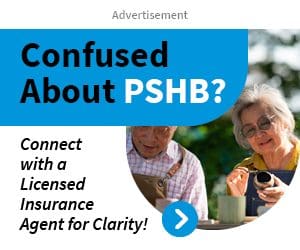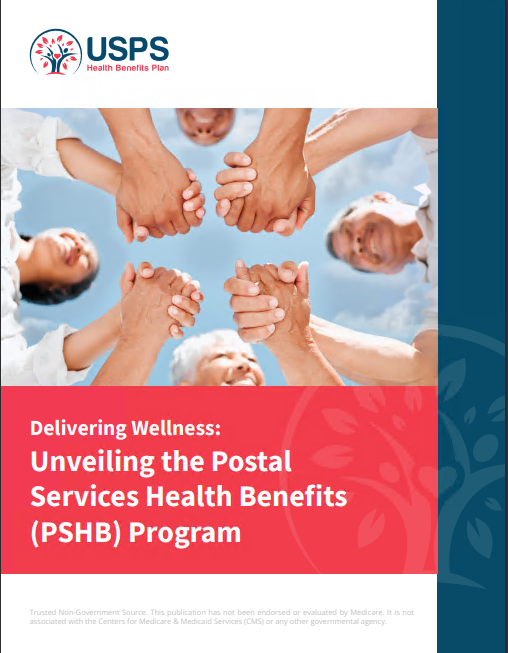Key Takeaways
-
The Postal Service Health Benefits (PSHB) Program has replaced FEHB for USPS workers and retirees in 2025, and understanding your new responsibilities and benefits is crucial.
-
Reliable resources—including official platforms, help lines, and government publications—are available to guide you through the transition.
Why You Might Be Feeling Lost Right Now
If you’re a current or retired USPS employee, 2025 has brought a significant shift to your health benefits. With the introduction of the Postal Service Health Benefits (PSHB) Program, many people are asking the same questions: Where do I go for help? How do I know what applies to me? What deadlines should I worry about?
It’s understandable to feel overwhelmed. This isn’t just a new benefits system—it comes with new rules, new enrollment platforms, and, for many, a mandatory Medicare Part B requirement. Luckily, there are clear places you can turn to for guidance.
1. Start with the U.S. Office of Personnel Management (OPM)
The OPM oversees the PSHB Program and serves as the central source of truth. Their website contains:
-
Plan brochures outlining what each PSHB plan covers
-
Tools to compare plan options side-by-side
-
Official eligibility and enrollment guidelines
-
Information on Medicare integration
In 2025, you should rely on the OPM’s dedicated PSHB pages, not older FEHB references, as the content is now program-specific.
2. Use LiteBlue and KeepingPosted.org
The enrollment process differs depending on whether you are an employee or a retiree:
-
USPS employees must use the LiteBlue portal during Open Season or a qualifying life event.
-
USPS annuitants (retirees) use KeepingPosted.org to make changes to their health benefits.
These platforms allow you to:
-
Enroll or change your PSHB plan
-
Update dependent information
-
Review plan materials tailored to you
Make sure your login credentials are current, especially during the enrollment window from November to December each year.
3. PSHB Navigator Help Line: 1-833-712-7742
Sometimes, speaking to someone directly is the fastest path to clarity. The PSHB Navigator Help Line is a toll-free number where you can:
-
Ask specific questions about eligibility
-
Get help with the online enrollment portals
-
Clarify how your Medicare status affects your PSHB options
This is a great starting point if you feel stuck or unsure where to begin.
4. Understand the Medicare Part B Requirement
One of the biggest changes in 2025 is the mandatory Medicare Part B enrollment for certain retirees and their family members. Here’s what you need to know:
-
Required: If you’re Medicare-eligible and retired after January 1, 2025, you must enroll in Medicare Part B to maintain your PSHB coverage.
-
Exempt: If you retired on or before January 1, 2025, you are not required to enroll.
OPM’s PSHB section has detailed charts explaining who is required and who is exempt. You can also call the PSHB Navigator to get clarity on your specific situation.
5. Review Your Plan’s Summary of Benefits
Each PSHB plan offers its own structure for premiums, copayments, coinsurance, and prescription drug costs. While you won’t find private plan prices, you will see general cost-sharing arrangements, including:
-
Deductibles (ranging from $350 to $2,000 depending on plan type)
-
Coinsurance percentages (typically 10%–30% in-network)
-
Copay amounts (e.g., $20–$60 for office visits)
-
Prescription tiers and out-of-pocket caps
Be sure to download the latest Summary of Benefits from OPM’s site or your enrollment portal. It breaks down exactly what you’ll pay out of pocket.
6. Medicare Part D and PSHB Drug Coverage
In 2025, PSHB plans automatically integrate with a Medicare Part D Employer Group Waiver Plan (EGWP) for Medicare-eligible members. Here’s what that means for you:
-
You receive enhanced drug coverage compared to standard Medicare Part D.
-
There’s a $2,000 annual out-of-pocket cap on prescription drugs.
-
Insulin costs are capped at $35 per month.
If you opt out of the Medicare Part D component, your PSHB plan may not cover prescription drugs at all. You’ll have limited opportunities to re-enroll, so it’s important to understand the implications.
7. Don’t Overlook Important Deadlines
Missing a deadline could mean losing coverage or facing delayed access. Key timeframes include:
-
Medicare Part B Special Enrollment Period: April 1 to September 30, 2024 (this has ended, but those affected should confirm their enrollment status).
-
Open Season: Runs annually from November to December.
-
Qualifying Life Events (QLEs): Allow you to make mid-year changes if you experience events like marriage, divorce, or retirement.
Write these dates down, and set reminders. Missing them could result in higher costs or gaps in coverage.
8. Your Union or Retiree Association Can Help
Many USPS employees and retirees are affiliated with unions or associations that offer personalized help. While not official government sources, these organizations often:
-
Provide member-only webinars and walkthroughs
-
Offer plan comparisons focused on USPS needs
-
Help clarify complicated eligibility rules
Reach out to your local chapter to ask about resources they may offer related to the PSHB transition.
9. Official Publications Are Still Your Best Bet
Printed materials still play a vital role, especially for retirees who prefer not to navigate online tools. Look for the following:
-
OPM’s PSHB Program Guide
-
Medicare & You 2025 handbook
-
PSHB enrollment instructions mailed in late October
You can request printed versions from OPM or Medicare by phone. Always keep copies of anything related to your plan selections or Medicare status.
10. Know Where PSHB Stops and Other Benefits Begin
PSHB covers medical, hospital, and drug benefits. But if you also use:
-
FEDVIP (Dental and Vision)
-
FEGLI (Life Insurance)
-
FSAFEDS (Flexible Spending Accounts)
You’ll manage those separately. These benefits aren’t affected by the PSHB transition and continue as usual, but they may require logging into different portals or contacting different help lines.
Make sure you don’t assume they’re included in your new PSHB coverage.
11. Stay Informed for Future Changes
Even though 2025 marks the first full year of PSHB implementation, more adjustments may come. You can stay ahead by:
-
Subscribing to OPM email updates
-
Reviewing annual plan brochures every fall
-
Watching for announcements on LiteBlue or KeepingPosted
Being proactive helps you avoid surprises and make the most of your benefits year after year.
You Don’t Have to Figure This Out Alone
The PSHB Program may feel like a major change, and it is—but you’re not left without resources. Between official tools, government help lines, printed guides, and organizational support, you can get the answers you need.
When in doubt, speak with a licensed agent listed on this website to walk you through your coverage options, especially if you’re nearing Medicare eligibility or about to retire.











